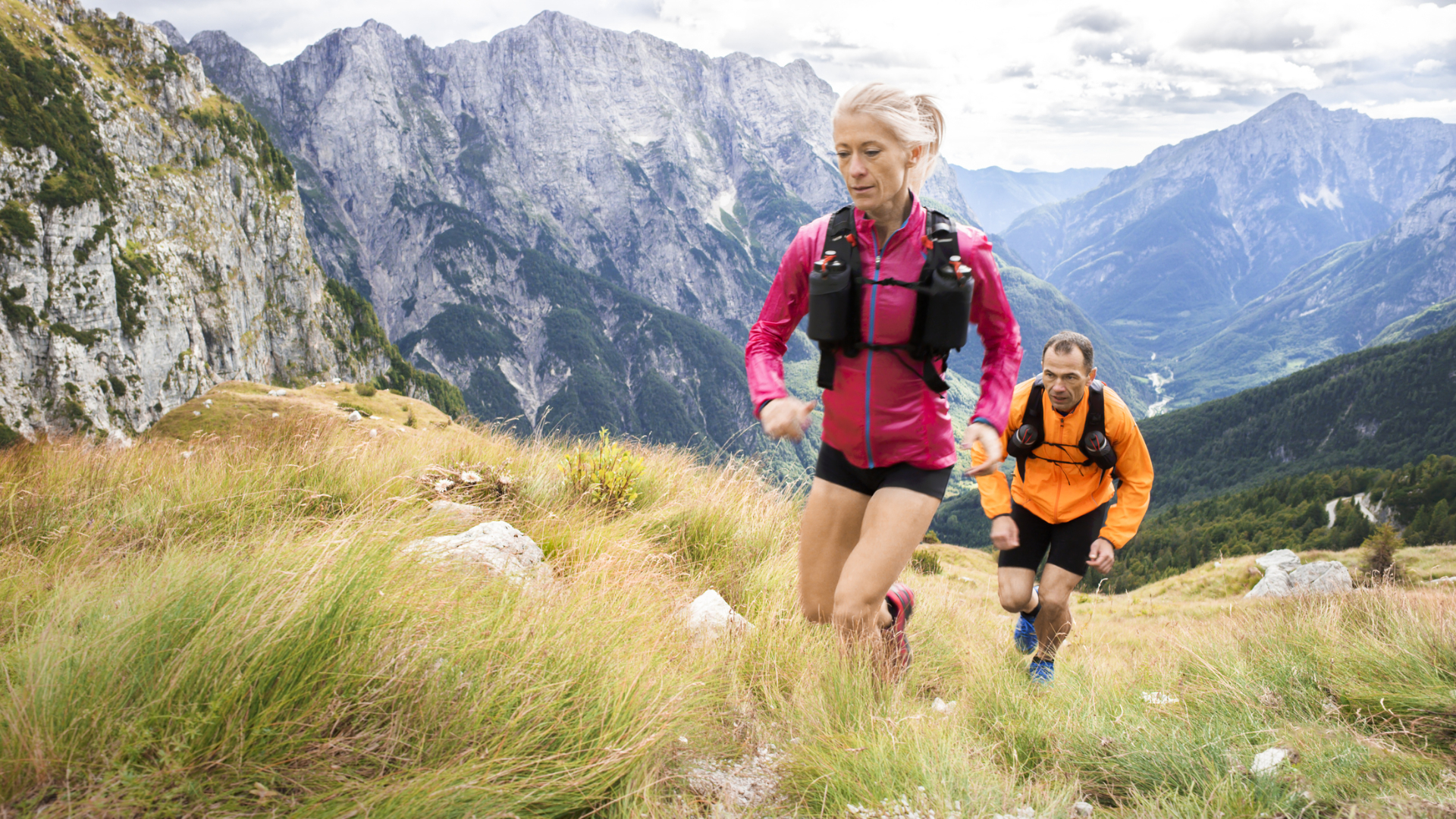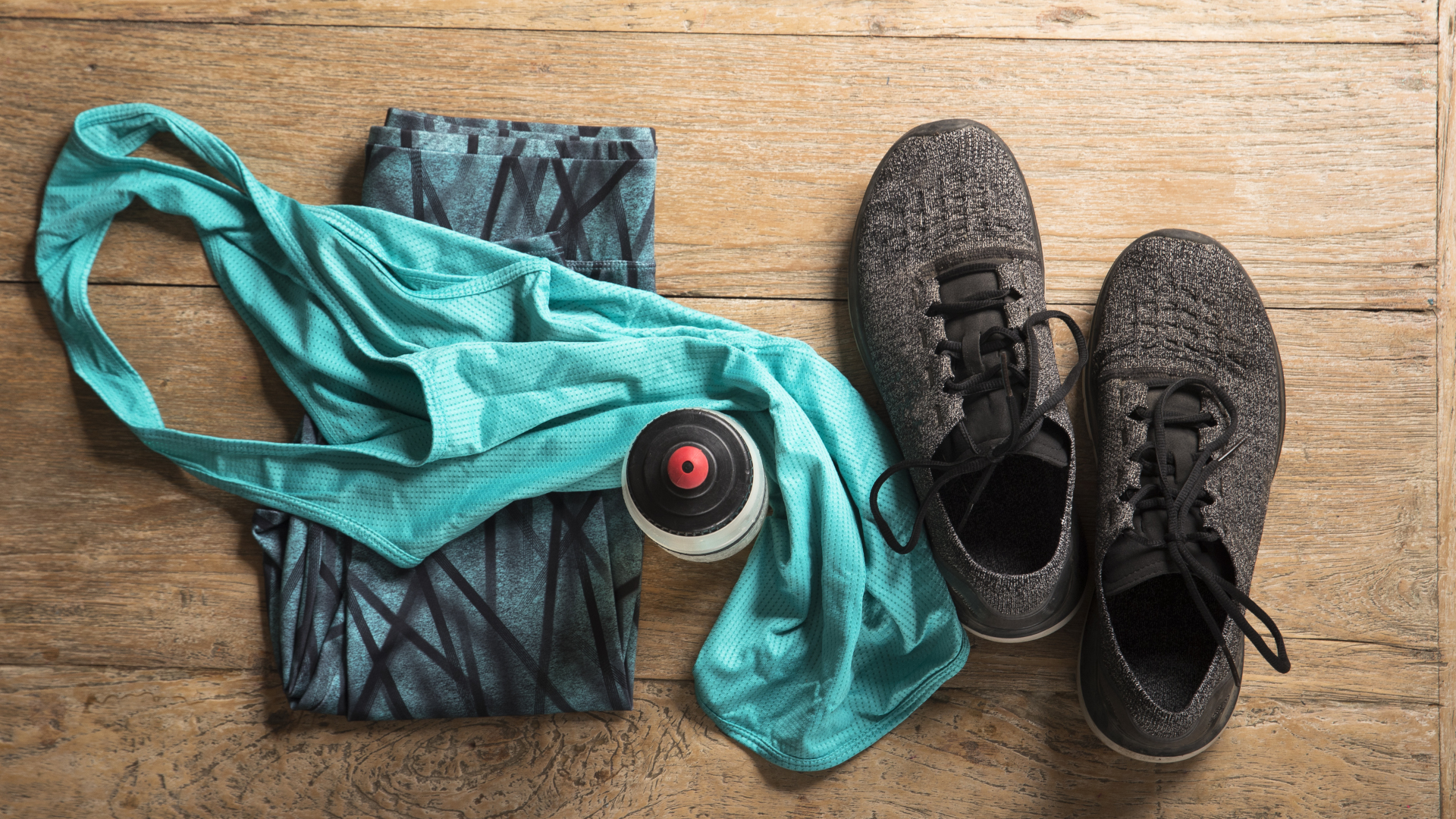I went on a 3-day guided trail running trip in the Alps – 5 reasons why this should be your next adventure vacation
My guide and I spent 72 hours running, hiking, eating and sleeping in close proximity to each other – and I couldn’t be happier about it

If you love adventure vacations, you probably think nothing of hiring a guide. Whether you’re skydiving in Interlaken, doing a via ferrata in the Dolomites or heli skiing in Alaska, you’ll go out with a pro unless you have a death wish.
A guide can plan your itinerary, set you up with gear rentals and handle permits so that you can focus on the fun part – dropping in for some thrills. But do you really need help with all that for a simple trail running trip?
One of the greatest things about running – even trail running – is how low-maintenance it is. Sure, for heading out into the backcountry ,you need more gear like a hydration pack, map and compass and a windbreaker, but at the end of the day, the adventure involves lacing up your best trail running shoes and exploring the wilderness on two feet.

If you’re planning a trail running vacation, you’re already a runner so you know what to do. At least, that’s what I thought when I was preparing for my recent 40 km trail run across the Swiss Alps. Verbier Tourism planned my itinerary for me and when they asked if I was okay with just having a guide for one of three days, I was all ears. I know how to read a map and how to run, so I was sure I’d be able to find my way, and honestly, I’m a bit of a fan of my own company.
Luckily for me, fate intervened in the name of Elena Bonanomi, a Verbier trail running guide who turned out to be available for the entirety of my alpine adventure. She met me at the train station and we spent the next 72 hours running, hiking, eating and sleeping in close proximity to each other – and I couldn’t be happier about it
Here’s why I think a guided trail running trip should be your next adventure vacation.

1. It takes all the legwork out of things
Planning an adventure can be almost as fun as the adventure itself, but it does take time and that may be in short supply where you are. Go with a guide and they take all the advance work out of planning your route.
All the latest inspiration, tips and guides to help you plan your next Advnture!
Bonanomi's first question for a client is, “What do you want to experience?”
From there, she plans the itinerary and you don’t have to worry about how many miles you’re doing each day, how much elevation you'll gain or how technical the route is going to be. A knowledgeable guide has all of that information in their head and can just pick the best trail for you.
“A guide will know what is doable within one day and how you can make the most out of the day. As soon as you know the client, you know what kind of volume you can put in one day so that it’s enough but it’s not too much,” says Bonanomi.
For trail running in Verbier, there’s an excellent topographical map showing various possible routes plotted out by local athletes, so like I said, I could have figured something out myself. But even if you know how to read a map, there’s often some distance between how a squiggly line looks on paper and how you feel once you get out there.

2. You get a pacer
Though I trail run regularly, a 40 km mountain run was a definite step up for me, and I’d be lying if I said I wasn’t a little nervous when Bonanomi and I got off the gondola and hit the trail. Would I be able to keep up? Would the altitude get the better of me?
After the first 30 seconds, when my calves and lungs got used to the lack of oxygen and the extra weight of carrying my running backpack, I felt a wave of relief wash over me. I tend to trail for an hour or two at the most, so pace isn’t an issue, but for long mountain days, I needed to save my energy. Bonanomi is used to pacing herself over ultra marathons, and I could tell instantly that her pace was going to be really sustainable for me.
Not only will your guide keep your pace in check, but they also take all the guesswork out of navigation, so you can focus on putting one foot in front of the other and enjoying your surroundings.
“If a guide runs in front of you, you don’t have to worry about where the trail is, you just follow, you never have to worry about where is the next intersection.”
Personally, I found this really mentally relaxing, so even though my body was working hard, I felt revitalized at the end of each day.

3. You’ll receive a packing list
You can find generic packing lists online for a trail running adventure, but the beauty of hiring a guide is that they’ll understand which of those items you truly need and which you can leave behind based on current conditions.
For example, I was all packed and ready to go for my trip when my guide got in touch to say the weather had been unusually wet and a waterproof jacket and rain pants were recommended. I threw my Montane Phase Lite jacket and Columbia Hazy Trail pants in my bag which only added about 20 ounces to my pack. Luckily, I didn’t end up needing them, but I felt more confident knowing I had wet weather protection.
What I did need were running crampons due to unusually late snowy sections and, because I live in Scotland, I don’t own a pair because I so rarely need them here. They’re also the type of item that isn’t strictly banned from hand luggage, but can get taken off you at security.
Making matters even more complicated, the gear store in Verbier had just sold out because of an ultra marathon the week before, but I didn’t even need to think about any of this because Bonanomi found out my shoe size ahead of time and brought me a pair of Nortec crampons. I was extremely grateful for them while we were crossing a short but extremely steep snowfield that would have been a lot scarier without some traction.
“When you live here, it’s just easier to plan," says Bonanomi.

4. You’ll have options
You can plan out your itinerary to a T, but sometimes, things just don’t go to plan, and a local guide can help you by having backup plans in place. A few years back, I tore my ACL skiing and had a couple of knee surgeries to fix it. In the lead-up to my trip, various illnesses and work trips meant I didn’t get as much training in as I’d planned, and during our first day of steep climbing in the Alps, my knee started to feel a bit grumpy.
Knowing I had two long days ahead of me, I started to feel quite nervous – was I going to have to take a helicopter ride down and do the limp of shame home? After voicing my concerns to Bonanomi, she instantly put my fears to rest. Because she knows the area like the back of her hand and has run virtually every trail here, she had countless ideas for how we could modify the itinerary if my knee wasn’t up to it.
Thanks to that pep talk, I got a great night's sleep, my knee felt much better in the morning, and not only did we carry on with the plan, we even added a few extra miles on our final day. You can know the trail you plan to take inside and out, but a local guide will understand the wider context of the terrain and trail system and all the available sidebars that could make your journey easier or level it up. There is no replacement for experience.

5. You'll learn about local delicacies
This trip wasn’t my first to the Alps – last year I went hut hiking in the French Alps and loved it. On that trip, however, everyone in my group came from other parts of the world. We had a fantastic time, but it wasn’t until my recent trip that I realized how much of the local knowledge – and cuisine – I’d missed out on.
Take pie, for example.
“A guide knows where the best pie is. Where to get pie and where to get coffee – because when you trail run, it’s very important to fuel properly,” says Bonanomi with a smile.
Fruit pies are a tradition in Swiss huts, with busy cabins making four or five each day using local blueberries and apricots. A slice isn’t too filling if you still have 10 km to run, but it’s loaded with fat, sugar and carbs, making it kind of the ultimate running snack. But without my guide, I’d have been laden down with mountains of Swiss cheese or, god forbid, using running gels for fuel. It's these details that make a guided trail running trip a memorable experience, and not just a safety technique.
“A guide should not only guide you – because you have a map, you can be guided by your map if you want – but if you hire a guide, you get all the extras, you learn what it’s like to live here, what are the specialties of the area," says Bonanomi.
She made sure we had scheduled stops for coffee and pie so I was always energized and learned a bit about the local culture and cuisine, something that I wouldn’t if I was running alone. And what a shame that would have been.
Julia Clarke is a staff writer for Advnture.com and the author of the book Restorative Yoga for Beginners. She loves to explore mountains on foot, bike, skis and belay and then recover on the the yoga mat. Julia graduated with a degree in journalism in 2004 and spent eight years working as a radio presenter in Kansas City, Vermont, Boston and New York City before discovering the joys of the Rocky Mountains. She then detoured west to Colorado and enjoyed 11 years teaching yoga in Vail before returning to her hometown of Glasgow, Scotland in 2020 to focus on family and writing.

